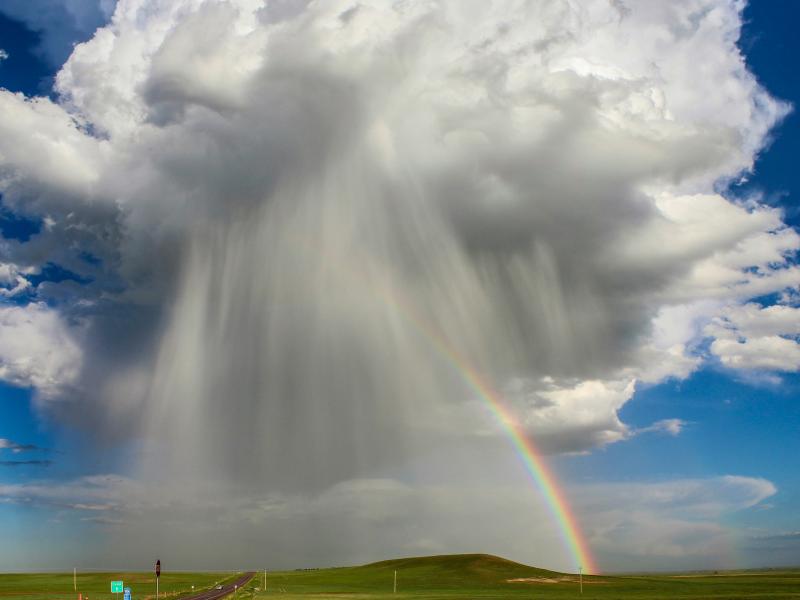
Atmospheric Science
Atmospheric Science
Understanding interactions among
atmospheric particles, clouds,
and the land surfaces
Understanding interactions among
atmospheric particles, clouds,
and the land surfaces
If Earth were the size of an apple, its atmosphere would be no thicker than the apple’s skin. What happens within that thin atmospheric layer is essential to life on the planet, from the quality of the air we breathe to the rainfall that supports agriculture and ecosystems.
For a long time, scientists have studied the atmosphere to better understand the forces that shape weather and climate. Researchers at Pacific Northwest National Laboratory (PNNL) focus on fundamental atmospheric processes.
Scientists apply the latest measurements and models to explore how tiny atmospheric particles called aerosols influence clouds, how the land surface interacts with the atmosphere above, and how extreme weather events impact energy and environmental systems.
Technical leadership
PNNL researchers lead and support field studies and long-term observations, from local campaigns to global efforts. We work closely with the Atmospheric Radiation Measurement (ARM) user facility and other Department of Energy-supported programs to gather data that improves Earth system model accuracy and supports decision makers. ARM provides atmospheric observations at ground-based sites around the world, the oldest of which has been in continuous operation for more than a quarter century. ARM also collects data using crewed aircraft and uncrewed aerial systems.
To better understand the complex chemical and physical processes that influence atmospheric aerosols and govern cloud processes, PNNL researchers use the controlled environments of the atmospheric research chamber and the ice nucleation chamber at the Atmospheric Measurements Laboratory (AML). The Environmental Molecular Sciences Laboratory (EMSL) also provides unique instrumentation that can be used to study different aspects of aerosol composition.
Improving the power of models
Ultimately, the goal of much of PNNL’s atmospheric research is geared toward improving the predictive power of models across a wide range of scales, from large-eddy simulations (LESs) that span a few kilometers to global models such as the Department of Energy’s Energy Exascale Earth System Model (E3SM).
Other key atmospheric science-focused projects led by PNNL researchers include:
- ICLASS – Integrated Cloud, Land-surface, and Aerosol System Study
- EAGLES – Enabling Aerosolcloud interactions at GLobal convection-permitting scalES
- WACCEM – Water Cycle and Climate Extremes Modeling
- HiLAT – High-Latitude Application and Testing of Climate Models
- LASSO – LES ARM Symbiotic Simulation and Observation.
- BEACONS – Boundary layer Exploration of Aerosols and Clouds ON Ships
PNNL researchers also study the impacts of heat waves, droughts, and other extreme events on the nation’s energy system and other human and natural systems. They do so knowing that atmospheric observations and models are critical for advancing other components of PNNL’s Earth System Science enterprise.




